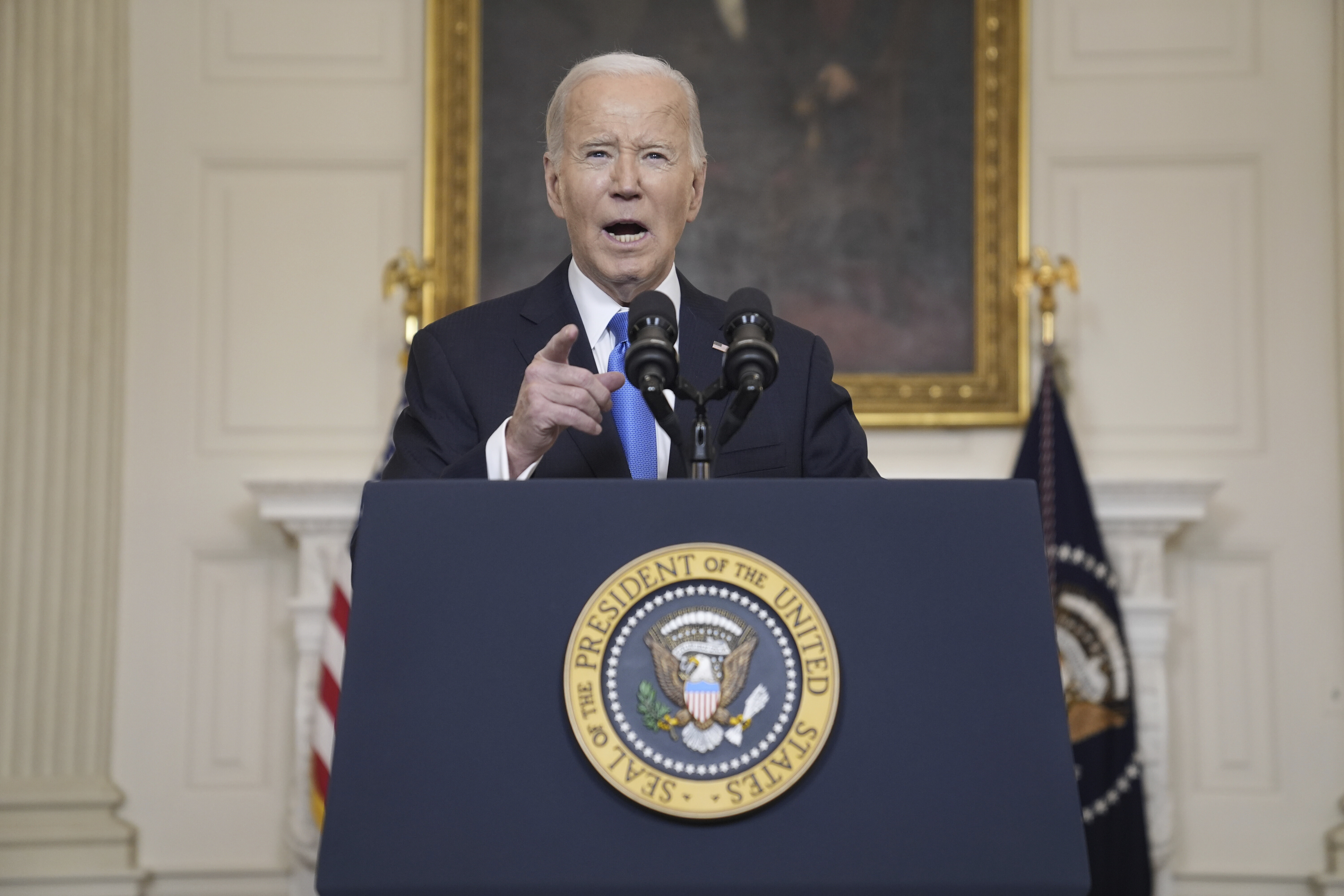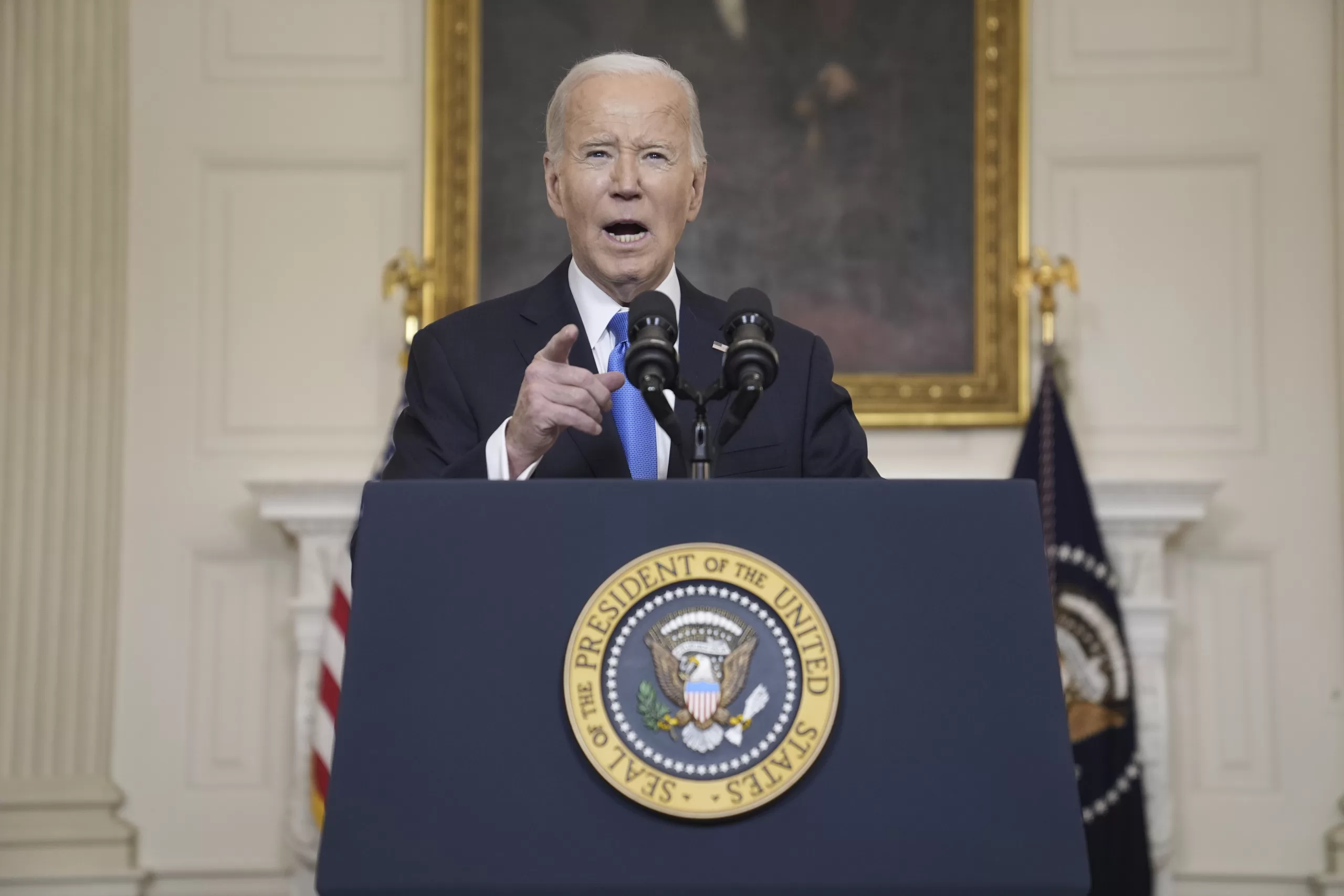
Advocates of tougher environmental regulations watched as then-President Donald Trump used a previously seldom-invoked statute to
unwind more than a dozen of the Obama administration’s rules in the opening months of 2017. They don’t want that to happen again.
The scramble to finish the regulations is crucial to determining how much of Biden’s ambitious legacy may survive past the November election, as the two likely nominees promote sharply contrasting views on climate change, green energy and the power of federal agencies.
The Biden administration has promised action on a lot of fronts, and how soon it rolls those rules out could determine how easy they are for a future administration to unravel. Policy insiders and Biden administration allies are urging agencies’ rule writers to keep their eye on the clock.
“I am acutely aware of the calendar, and I’m checking on status regularly,” said Paul Billings, the national senior vice president for public policy at the American Lung Association. “In a month, my hair may be on fire.”
Lisa Frank, who leads the Washington legislative office at the advocacy group Environment America, said she’s feeling “anxious excitement” over the raft of expected rules.
“The Biden administration is poised to deliver some of the biggest gains on clean air, clean water and safeguarding nature that we’ve seen in years,” Frank said. That’s on top of “the most significant progress by a very long shot” in addressing climate change.
“Obviously, there’s still a lot of work to do to make all that progress,” she said.
James Goodwin, a senior policy analyst at the liberal-leaning Center for Progressive Reform, said there is no reason agencies cannot get their rules done at this point in Biden’s term.
“They know this stuff cold,” Goodwin said. “There are no impediments. It’s pedal to the metal time.”
‘The sooner the better’
Looming large over the administration’s rule-writing this year: the prospect of a second Trump administration.
During his first term, Trump shocked environmental advocates and former Obama administration officials — many of whom had been banking on a Hillary Clinton presidency — when he and the GOP-controlled Congress used the 1996 Congressional Review Act to trash more than a dozen Obama-era rules. Before Trump’s presidency, lawmakers had used the once-obscure law only once, to roll back a single rule from the Clinton administration.
The law allows Congress to overturn agency rules within 60 congressional session days of when a regulation is finalized and sent to the Capitol. But Congress’ schedule can be hard to predict, and it’s not yet clear when the deadline for shielding rules will be.
The lesson from Trump’s use of the CRA “certainly has sharpened the focus to be as conservative as possible in terms of estimating when it could possibly be,” said Matthew Davis, legislative director at the League of Conservation Voters.
Experts think the deadline could be this spring — possibly in May or June — but the regulatory process is complex, involving steps like White House review and getting rules printed in the Federal Register. There’s also a threat of another government shutdown that would force the agencies to stop working. So advocates don’t want to take any chances.
“The sooner the better,” Frank said. “We’ve been encouraging the Biden administration to get many of these done by Earth Day” on April 22, she added, both for the symbolism and to ensure that they aren’t susceptible to congressional repeal.
The administration is cognizant of the deadlines, according to its environmental allies.
“It’s clear that senior career and political leadership are also aware of the calendar,” Billings said.
The administration is “very focused” on getting the rules out in a way that would “insulate them from a reach-back,” Davis said.
At risk of rules ‘bottleneck’
Leaving it late can be dangerous. Rules are already sitting at the White House’s Office of Information and Regulatory Affairs. Others could wait to be printed in the Federal Register.
“There certainly could be a bottleneck at OIRA as more actions get sent for review,” said Brittany Bolen, counsel at the law firm Sidley Austin, who has been tracking regulations.
But life happens. Bolen, then head of the Trump EPA’s policy shop, remembers 2020 when the Covid-19 pandemic landed in the United States. Federal offices closed and Congress took more legislative days to pass relief legislation for the virus outbreak. In turn, the regulatory runway got stretched.
“We were operating on a May timeline, and that got pushed out to August,” Bolen said.
Nevertheless, opposition to several of Biden’s rules runs strong among GOP lawmakers. That could spell trouble for them in 2025.
“I would point to a substantial body of pushback to the promulgation of these rules by Republicans on Capitol Hill,” said Joseph Brazauskas, who led EPA’s congressional and intergovernmental relations office during the Trump administration.
Those include EPA’s forthcoming rules on power plants’ greenhouse gas emissions and vehicles’ tailpipe pollution, said Brazauskas, now senior counsel for the Policy Resolution Group at the law firm Bracewell.
The administration’s
latest regulatory agenda, issued in December, provides agencies’ best estimates of when they expect to move next on their rules, including when they will issue final versions.
An Office of Management and Budget spokesperson said the office does not comment on rules under review.
Here are some of the big-ticket regulations environmental advocates are watching for:
EPA
EPA rule writers are hustling behind the scenes to wrap up work on a suite of big Biden regulations on climate, water and chemicals this year.
Next month, EPA is looking to finish a regulation designating the so-called “forever chemicals” PFOA and PFOS as hazardous substances under the Superfund law.
Closely watched climate rules, such as
revamped tailpipe pollution limits for cars and trucks, are expected in March as well. Those rules, under review at the White House,
could lead to electric vehicles making up two-thirds of car and light truck sales as soon as 2032, the EPA has estimated.
In addition, the agency is aiming to finish its long-anticipated standards for power plants’ greenhouse gas emissions in April. That rule would require fossil fuel plants to rely on relatively new technologies to bring down their climate pollution —
or force many of them to shut down.
In an interview with POLITICO’s E&E News last year, EPA Administrator Michael Regan said the agency was “on track” to finish its climate rules.
Also on the agenda to be finished in April: EPA’s push to have polluters clean up coal ash at inactive power plants and disposal sites, which could prove costly for energy companies. The toxic waste product, produced by coal-fired power plants, can leak from ponds and landfills, potentially contaminating nearby groundwater.
EPA is expected to roll out a revised lead and copper rule for drinking water systems, which would trigger action sooner to reduce lead exposure and require lead pipes to be replaced within 10 years.
That rule isn’t expected to be completed until October, according to the administration’s
regulatory plans.
“EPA is working hard to finalize several important rules this spring to ensure public health and environmental protection for all Americans,” EPA spokesperson Remmington Belford said.
Federal workforce
Biden’s team is writing a rule that could have major implications for employees at environmental agencies.
Last year, the Office of Personnel Management proposed stronger guardrails for the civil service. The regulation says career employees keep their civil service protections unless they voluntarily accept a political appointee job and adds requirements when reclassifying career positions as political appointments.
The rule could serve as a vital defense for federal employees if Trump wins in November.
Before he left the White House,
Trump signed an executive order proposing to create a new class of government workers, Schedule F, which was designed to turn many career employees into at-will appointees and thus easier to be fired.
Biden revoked that order soon after taking office.
The regulation, with its comment period closed last November, is slated to be completed in April.
“OPM is committed to protecting the rights of federal workers who deliver critical services for Americans in every community,” said office spokesperson Viet Tran.
White House
A much-anticipated rule to rework environmental permitting is in its final stages after the Council on Environmental Quality submitted the regulation for White House review in January.
The “Phase 2″ revisions for the National Environmental Policy Act, a landmark law dating from the 1960s, are aimed at speeding up the development of clean energy and power transmission projects. (A legislative attempt to accomplish the same goals has been mired for years in Congress.) It would hasten the permitting process for projects such as wildfire management, electric vehicle charging infrastructure and offshore wind. It would also reverse parts of a
Trump administration rule aimed at altering how the government enforces the statute.
The Biden rule is expected to be completed in April, the administration estimated in its
latest regulatory agenda.
Interior Department
Major proposals about the use of public lands are still in the works, from new requirements on oil and gas drilling to enshrining conservation as a priority on the 245 million acres overseen by the Bureau of Land Management.
Bureau officials have said the conservation changes — which would make conservation equal to energy development, livestock grazing and recreation on public lands — are necessary to protect Western rangelands increasingly vulnerable to drought in a warming world.
But Republicans in Congress and in Western states have railed against the proposal, with Sen. John Barrasso (R-Wyo.) last year calling it “illegal,” making it a likely target for reversal. BLM has signaled it plans to finalize the rule in April.
Key oil and gas proposals by BLM are also still pending, including one released last year that would increase royalties to new minimums set by the Inflation Reduction Act, as well as prioritize new oil leasing where oil potential is high. A second proposed rule from 2022 would limit the venting and flaring of natural gas — practices that release planet-warming methane into the atmosphere — on public lands. Both were scheduled to be finished by this spring, according to the administration’s regulations plan.
Meanwhile, the timing of another contentious Interior rule to protect migratory birds remains uncertain. The Fish and Wildlife Service’s proposal to implement a Migratory Bird Treaty Act permit system governing the unintentional killing of birds by industry was abruptly pulled back from an OIRA review last December.
Several Endangered Species Act decisions expected late in Biden’s term could raise hackles among the Trump team, such as a decision on listing the wide-ranging monarch butterfly as a threatened or endangered species. The decision about the monarch butterfly, along with the designation of its critical habitat, is on the books for Fish and Wildlife Service action in September.
Final Fish and Wildlife Service rule proposals for revising how the Endangered Species Act and associated critical habitat decisions are made are under White House review and are supposed to be wrapped by April, according to the regulatory plan.
Energy Department
Rule watchers are keeping tabs on several big efficiency standards expected soon from the Energy Department, on the heels of the DOE’s
much-debated efficiency requirements for gas stoves.
New regulations for clothes washers and dryers are expected imminently. Other potential major regulations include residential water heaters and distribution transformers — both expected by April.
DOE is also expected to issue efficiency regulations this year for dishwashers, ceiling fans, consumer boilers, vending machines, electric motors, commercial ice makers and other appliances.
Brian Dabbs, Heather Richards and Laura Maggi contributed to this report.
